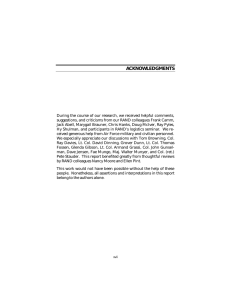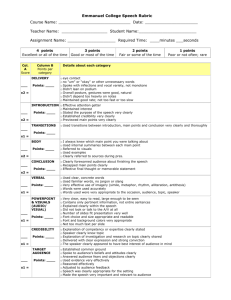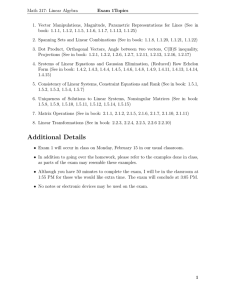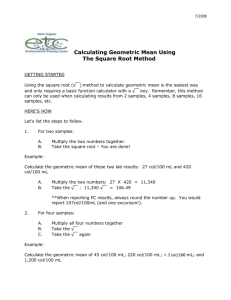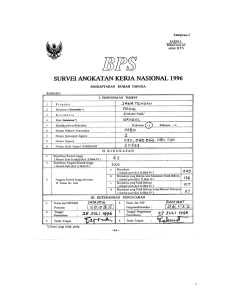Linear Algebra 2270-2
advertisement
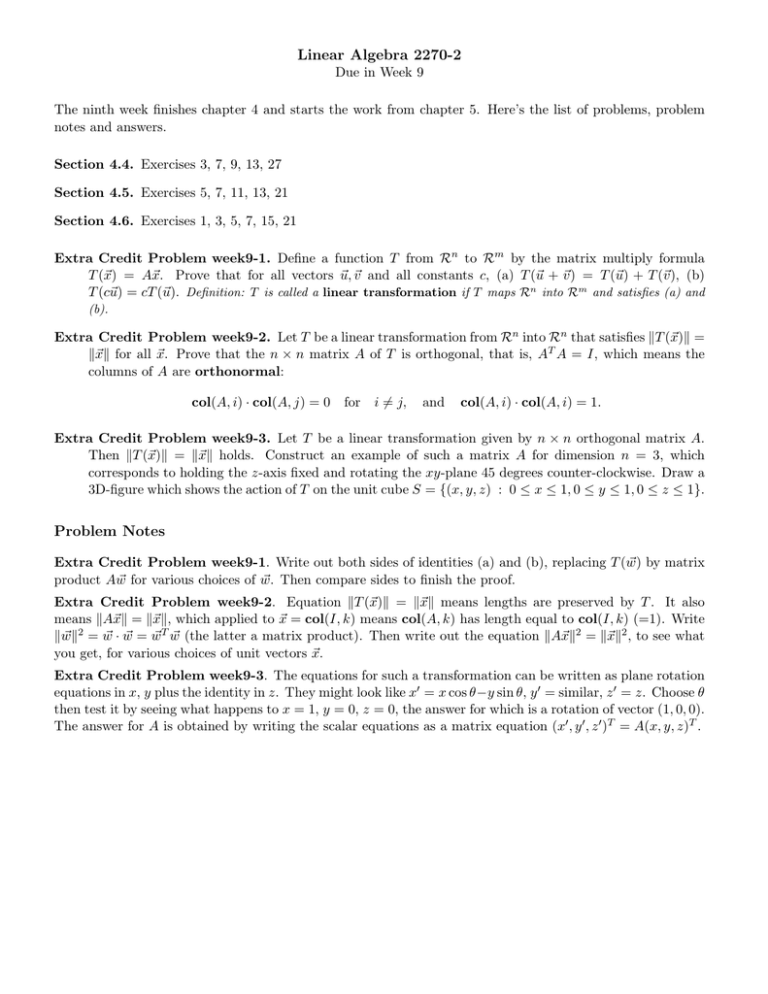
Linear Algebra 2270-2
Due in Week 9
The ninth week finishes chapter 4 and starts the work from chapter 5. Here’s the list of problems, problem
notes and answers.
Section 4.4. Exercises 3, 7, 9, 13, 27
Section 4.5. Exercises 5, 7, 11, 13, 21
Section 4.6. Exercises 1, 3, 5, 7, 15, 21
Extra Credit Problem week9-1. Define a function T from Rn to Rm by the matrix multiply formula
T (~x) = A~x. Prove that for all vectors ~u, ~v and all constants c, (a) T (~u + ~v ) = T (~u) + T (~v ), (b)
T (c~u) = cT (~u). Definition: T is called a linear transformation if T maps Rn into Rm and satisfies (a) and
(b).
Extra Credit Problem week9-2. Let T be a linear transformation from Rn into Rn that satisfies kT (~x)k =
k~xk for all ~x. Prove that the n × n matrix A of T is orthogonal, that is, AT A = I, which means the
columns of A are orthonormal:
col(A, i) · col(A, j) = 0
for
i 6= j,
and
col(A, i) · col(A, i) = 1.
Extra Credit Problem week9-3. Let T be a linear transformation given by n × n orthogonal matrix A.
Then kT (~x)k = k~xk holds. Construct an example of such a matrix A for dimension n = 3, which
corresponds to holding the z-axis fixed and rotating the xy-plane 45 degrees counter-clockwise. Draw a
3D-figure which shows the action of T on the unit cube S = {(x, y, z) : 0 ≤ x ≤ 1, 0 ≤ y ≤ 1, 0 ≤ z ≤ 1}.
Problem Notes
Extra Credit Problem week9-1. Write out both sides of identities (a) and (b), replacing T (w)
~ by matrix
product Aw
~ for various choices of w.
~ Then compare sides to finish the proof.
Extra Credit Problem week9-2. Equation kT (~x)k = k~xk means lengths are preserved by T . It also
means kA~xk = k~xk, which applied to ~x = col(I, k) means col(A, k) has length equal to col(I, k) (=1). Write
kwk
~ 2=w
~ ·w
~ =w
~T w
~ (the latter a matrix product). Then write out the equation kA~xk2 = k~xk2 , to see what
you get, for various choices of unit vectors ~x.
Extra Credit Problem week9-3. The equations for such a transformation can be written as plane rotation
equations in x, y plus the identity in z. They might look like x0 = x cos θ−y sin θ, y 0 = similar, z 0 = z. Choose θ
then test it by seeing what happens to x = 1, y = 0, z = 0, the answer for which is a rotation of vector (1, 0, 0).
The answer for A is obtained by writing the scalar equations as a matrix equation (x0 , y 0 , z 0 )T = A(x, y, z)T .

